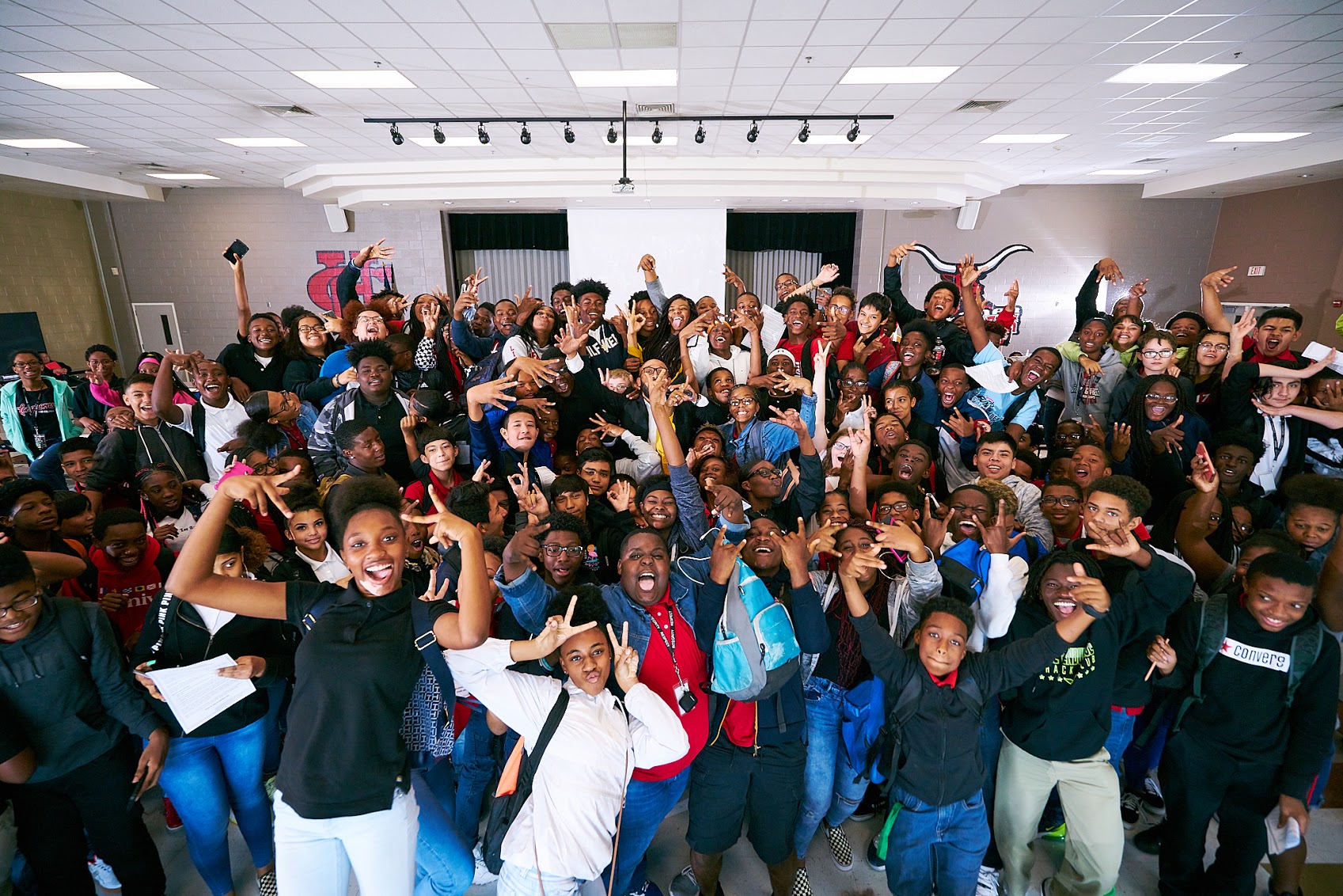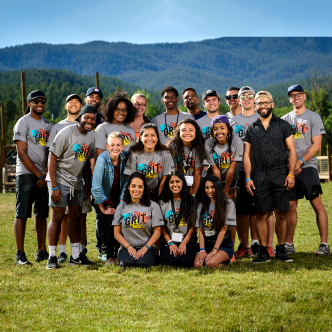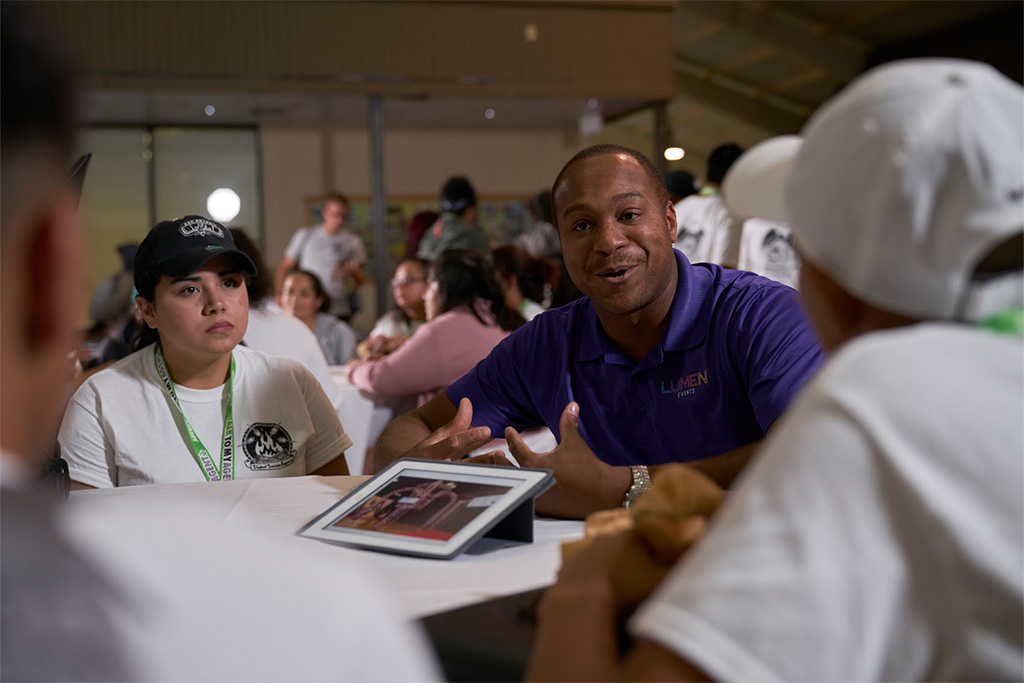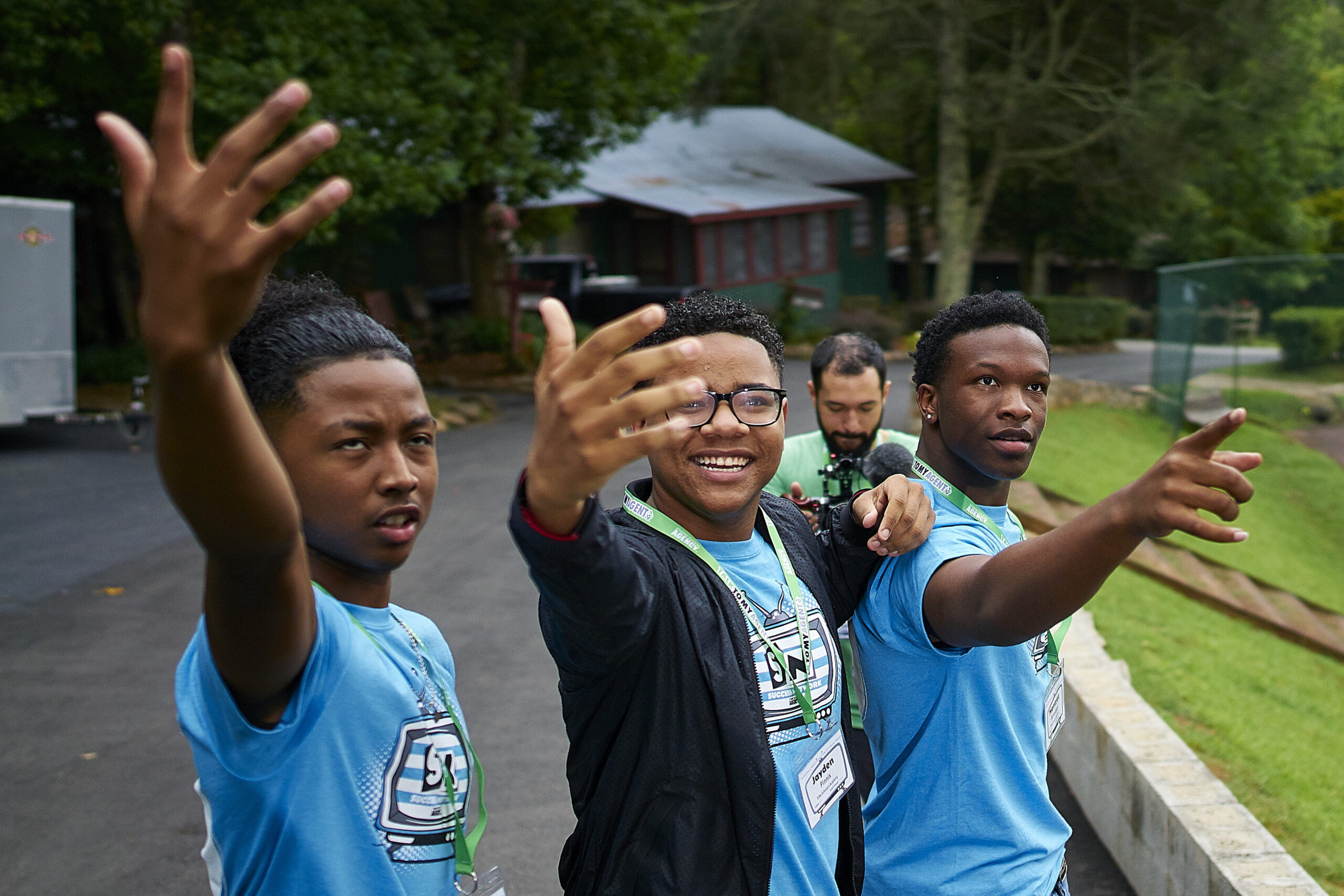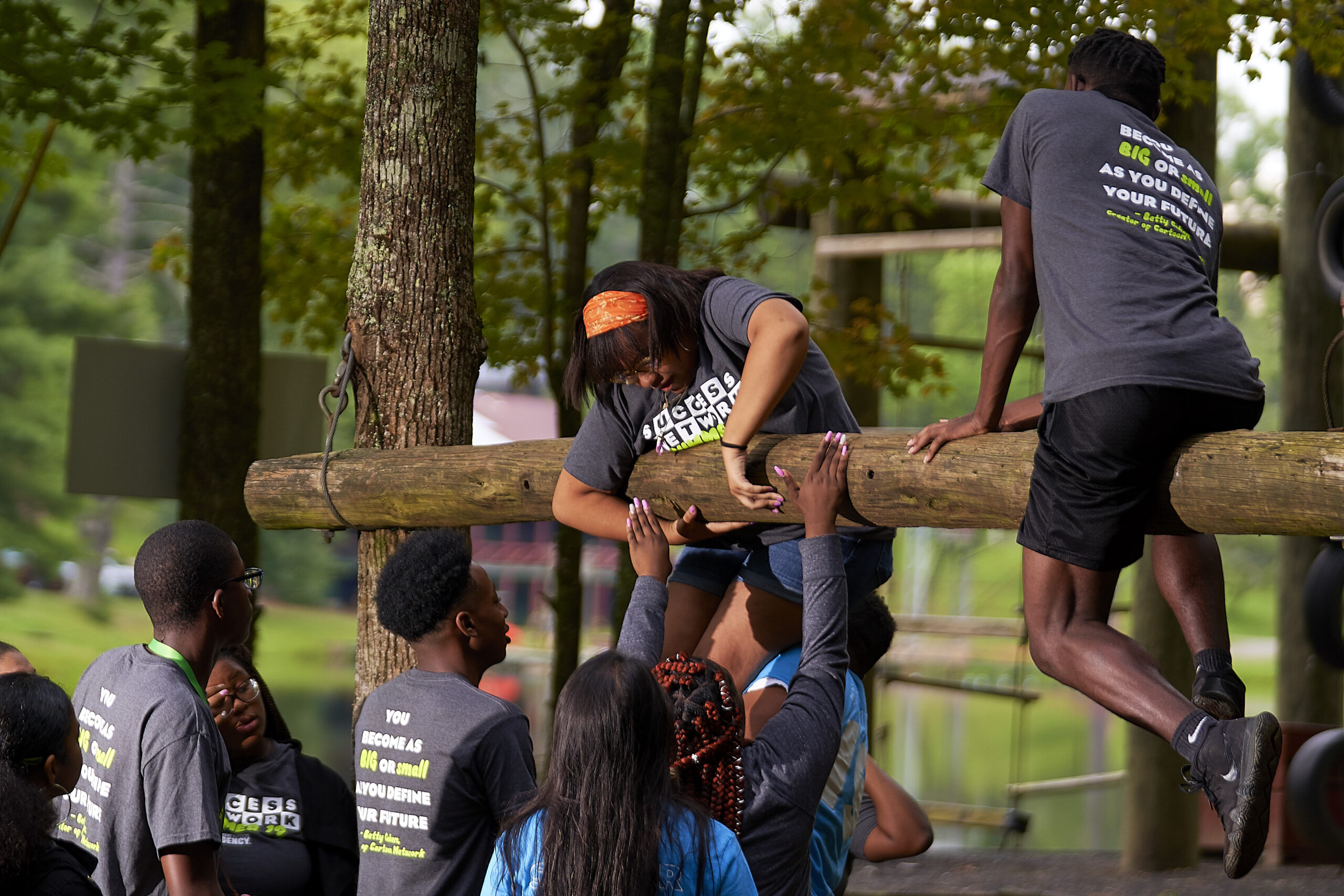Imagine being handed a high school with a 100% minority population and 100% student poverty rate. The situation is so dire that the city is even planning to close the school and send its 325 students elsewhere.
How would you react? Where would you begin?
This is exactly where principal Richard Gordon found himself in 2013, standing at the entrance to Philadelphia’s Paul Robeson High School for Human Services.
Eight years later, he was officially named the best principal in the nation.
What student success strategies did Gordon use to address problems like chronic absenteeism and behavioral issues? What lessons can you learn from his example to create your own student success plan? And how can a student success platform empower your students to succeed?
We’ll dive into these important questions and much more, so keep reading below.
Chronic Absenteeism: How Big Is the Problem?
The Department of Education defines “chronic absenteeism” as any student who misses 15 or more days of school during the academic year. Experts estimate that as many as one in six students is chronically absent.
Here are few key findings from the report cited above:
● Native American and black students and 40%-50% more like to be chronically absent than white students
● Over 20% of high school students nationwide are chronically absent
● More than 800 school districts nationwide report that at least 30% of their students miss at least three weeks of school each year
● Students with disabilities are 50% more likely to be chronically absent than those without disabilities
The numbers speak for themselves: Absenteeism is an ongoing problem for our nation’s schools. Underlying issues range from extreme poverty to physical and mental health issues to bullying and social anxiety. Of course, the pandemic has only made things worse. In some areas, student absences doubled during 2020. Meanwhile, many students in poorer communities lacked access to the devices and internet stability required for distance learning. These sobering facts lead us to our big question: What’s the solution for school districts struggling with chronic absenteeism?
Let’s see how one incredible principal was able to turn things around for his Philadelphia high school.
Success Story: Meet Principal of the Year Richard Gordon
Richard Gordon could relate to most of the students at the inner-city Paul Robeson High School because he had a challenging childhood himself.
His parents divorced when he was eight, and he lived with his father in New Jersey. Then one night, when Gordon was in seventh grade, his father didn’t come home. Gordon took care of his younger brother and made sure they both got to school until he learned that their father was in jail.
After that, Gordon went to live with his mother in Philadelphia. She woke up at 5 AM every day to ensure that her son made it to his school in New Jersey. Her example, coupled with a few inspiring high school teachers, motivated Gordon to get into education himself.
He studied at Lincoln University and worked as a teacher and administrator in Baltimore and Washington DC. Then he accepted the principal position in Philadelphia that would soon win him a national achievement award.
Challenges & Solutions
With over 20 years of experience in urban education, Gordon already understood what doesn’t work. He saw first-hand that zero-tolerance policies and suspensions didn’t teach anyone anything, let alone solve the problems.
As mentioned at the outset, Paul Robeson High School stood on the brink of closure in 2013. The staff was leaving in droves because they questioned the abilities of their students. Meanwhile, students had little academic direction and felt physically and emotionally unsafe.
Was it any wonder that chronic absenteeism had become such a large problem for the school? To turn things around, Gordon focused on these four core values:
● Nurturing positive, healthy relationships
● Adopting a growth mindset
● Focusing on college and career readiness
● Belief in one’s self and their community
The results were nothing short of miraculous. Within a few years, the graduation rate shot up to 95%. (To put that into perspective, the average graduation rate in the Philadelphia City School District is only 66%.)
At the same time, truancy rates dropped below 10% (from a high of 32%), while school suspension rates fell to 5%. As a result, the school was removed from the state’s list of low-performing schools in 2017.
What was behind this dramatic turn of events? Let’s take a closer look at Principal Gordon’s student success plan.
Gordon’s Unique Student Success Strategies
When Gordon arrived on the scene, he spoke frankly with the staff at Paul Robeson High School. His list of non-negotiables gives us insight into what makes him so effective as a leader.
Put the Kids First (Always)
Gordon’s philosophy is that everything that happens at the school needs to be for the students. The focus always has to be on helping them to be successful now and in the future.
As Gordon says, “I deal with kid issues, not adult issues.” He cares about what’s happening with his teachers and the rest of his staff, of course, but the primary importance must always be on the students. Oftentimes, adult concerns can wait.
To be sure, Gordon practices what he preaches. He’s put formal programs into place for all his students, including career mentorship and mental health counseling. His goal was to create a spirit of “college and career readiness” on campus — and he succeeded.
Principal Gordon has even gone one step further and given every student his personal telephone number. He fosters open and honest communication with his “open door” policy in his office. Students have even produced short films that highlight pizza parties and snack times in Gordon’s office.
Forge Connections & Opportunities in the Community
To boost student attendance and engagement and get them more involved in their education, Gordon reached out to nearby institutions including:
● The University of Pennsylvania
● Drexel University
● The University City Science Center
● The Community College of Pennsylvania (CCP)
● The Children’s Hospital of Philadelphia
He was shocked to learn that there were no internship or mentorship programs in place, despite Robeson’s proximity to these places. All of that quickly changed as he set up dual enrollment and after-school opportunities for students to get involved in. Gordon also acknowledges the stigma around mental health support, especially in minority communities.
His mental health program has turned that viewpoint around dramatically, with all students participating in group and individual therapy. There’s now a full-time therapist on the campus five days a week, as well as a part-time therapist and interns.
The Robeson Motto: Build Your Own Brand
Perhaps the biggest contributing factor that ties all of Gordon’s success together is the school’s motto: Build your own brand.
Gordon tells his students, “Tell us what you want to do, and we’ll find a path to help you get there.”
For starters, every student is required to apply to community college. Gordon ensures that 100% of his students get accepted so they at least have that as an option. He also requires them to apply to at least five other colleges or universities.
Students who plan to go straight into the workforce must meet with a business consultant every week. Juniors and seniors practice writing business plans and take field trips to learn from local business owners.
Gordon even helped one student with NASCAR dreams to connect with a professional racing team and get started in the amateur circuit.
What a Student Success Platform Can Do For Your School
Clearly, Gordon’s hard work and extraordinary visions are paying off. You may need to adopt different strategies in your school district, but one thing remains the same — fostering those all-important connections.
The more engaged and focused your students are, the less likely they are to skip classes or drop out. Keeping them connected with their teachers, counselors, and fellow students is key. That’s why many administrators are now using a student success network to get (and keep) their students involved in their education. This detailed digital infrastructure keeps students connected to every aspect of their education, no matter where they are. Through the program, students also benefit from a free online mentoring platform with caring, qualified agents. They can get advice on everything from applying to college to career exploration to homework help.
What are the results? You’re sure to see a decrease in absenteeism, increased engagement, and up to 10 times more personalized advising time.
Student Success Agency: Your Free Online Mentoring Program
Richard Gordon’s story and philosophies are an inspiration to us all.
No matter where your school is located or what challenges your students are facing, you also can experience incredible results with the right student success plan.
As we discussed above, one of the keys to battling chronic absenteeism is by increasing student engagement. And one of the best ways to increase engagement is through our agency’s unique student success platform.
More than just a free online mentoring program, our goal is to help you design student success strategies that work for your students. We recognize that student success depends not just on technology but also on the human connection with mentors, tutors, and advisers.
Are you ready to follow in Richard Gordon’s shoes and become the next great student success story? Contact us today and let’s discuss what our platform can do for your students.

